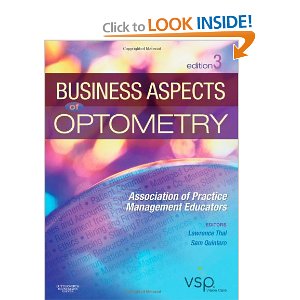As an eye doctor I regularly recommend regular eye checks to my patients. There are many eye diseases that when caught early can greatly reduce the potential long term damage. As eye doctors we know this as common sense. As business owners we don’t always have regular health checks on the financial health of our practices. The following is found in the book Business Aspects of Optometry. It is very relevant to the health of your practice.
 Projections of income, expenses, potential profit and financing requirement are fundamental considerations in practice acquisitions. The three primary financial statements: income statement (profit and loss statement), balance sheet and cash flow statement are all tools with different purposes that may be used to help assess the financial health of the business side of an optometric practice.
Projections of income, expenses, potential profit and financing requirement are fundamental considerations in practice acquisitions. The three primary financial statements: income statement (profit and loss statement), balance sheet and cash flow statement are all tools with different purposes that may be used to help assess the financial health of the business side of an optometric practice.
The income statement shows how profitable a practice is and is represented in its’ simplest form by the following formula:Net profit = Revenue – Expenses.
The balance sheet provides a glimpse of a practice’s financial health at any given point by reporting the cumulative results of all previous decisions that influenced the finances and operations to that time. The balance sheet shows the assets owed by the practice, the debt obligations owed, and the equity (net worth) the owner has invested in the practice. The balance sheet is represented by the following formula:Assets = Liabilities (debt) + Owner’s equity (net worth).
The cash-flow statement reveals the source and uses of practice income for any given period. It is the definitive account of cash-flow status because it is generated using the cash basis method of accounting. In this method, income is reported when received and expenses are reported when paid.





